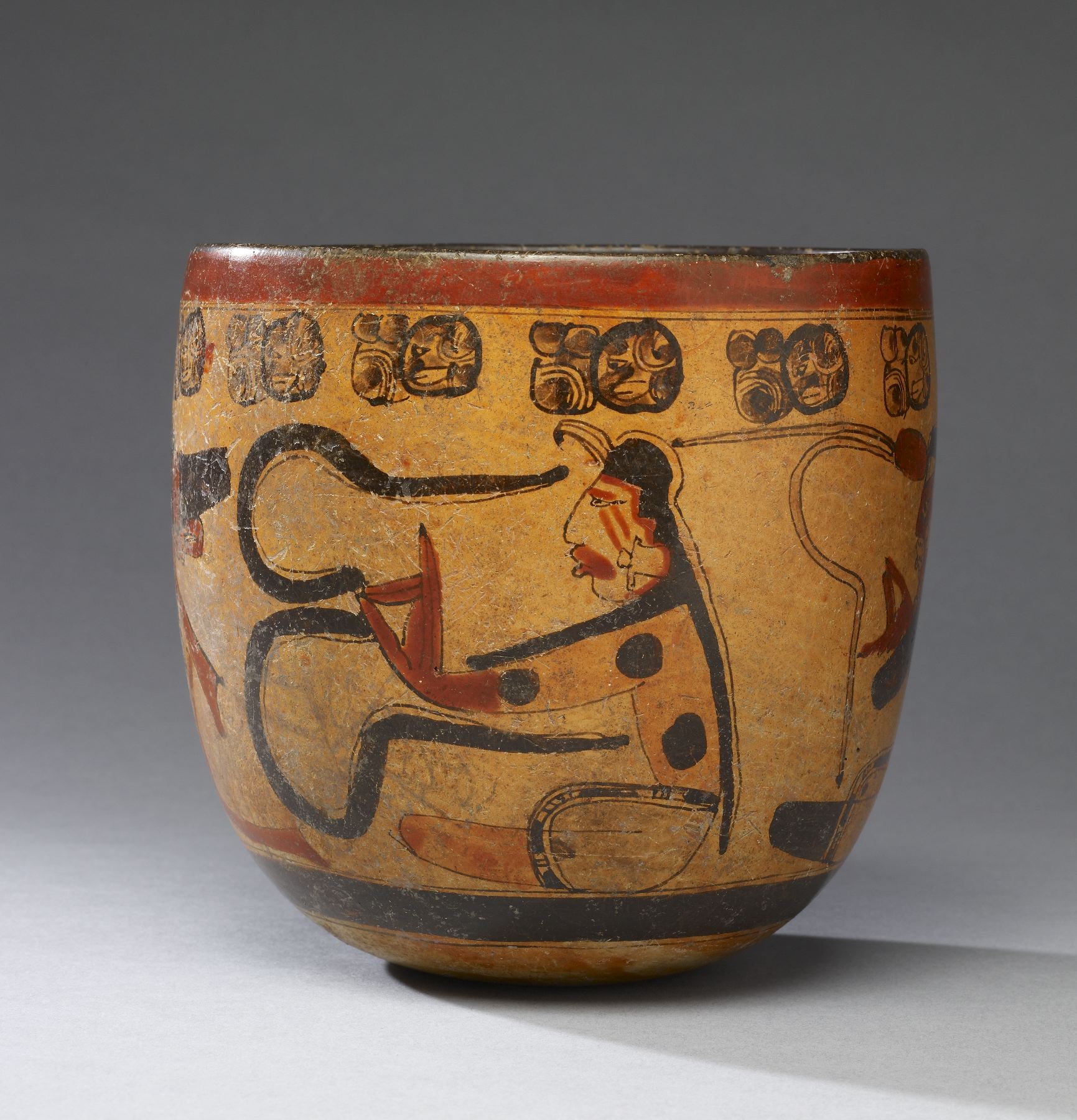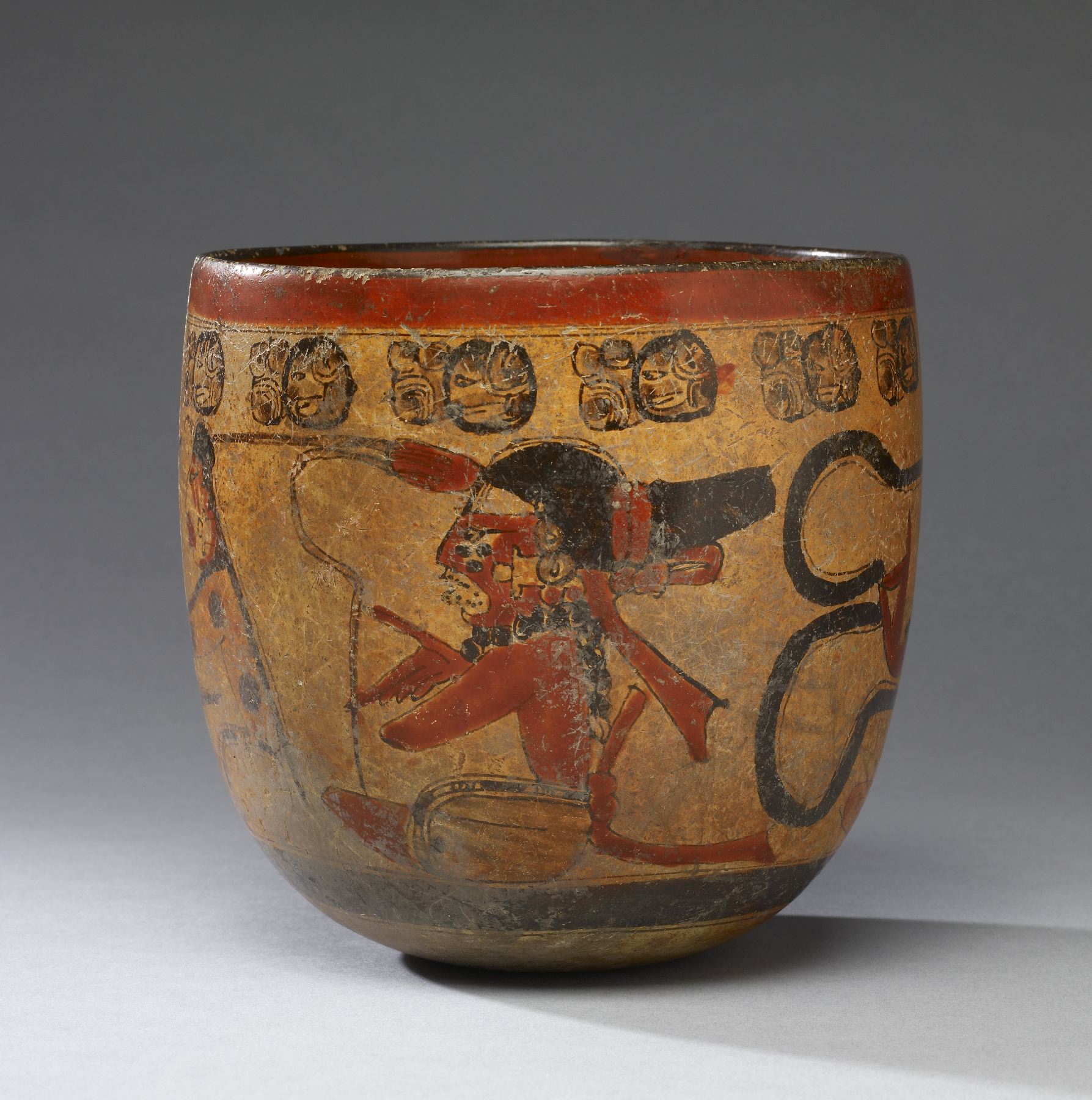Bowl
(Ancient Americas )
The shape of this vessel makes reference to the gourd which was, and remains today, the primary food-service and drinking container among the Maya and other Mesoamerican peoples. The painted bowl is decorated with four seated human figures. The black body-painting of some and the black spots on others suggest a supernatural identity or association for the group. The moderately abstract, elongated hand gestures are narrative signals which likely specify the nature of the interaction among the individuals. For example, the seated figure with three black spots on his torso and arm strikes a pose that may connote a generalized greeting. Yet in spite of detailed studies of pose and gesture in Maya art, the lack of corroborating evidence in the art historical, archaeological and ethno-historic records continues to challenge all efforts to ascertain the true meanings of these formalized gestures.
Provenance
Provenance (from the French provenir, 'to come from/forth') is the chronology of the ownership, custody, or location of a historical object. Learn more about provenance at the Walters.
J. Guy Puerto [date and mode of acquisition unknown]; John G. Bourne, 1960, by purchase; Walters Art Museum, 2009, by gift.
Exhibitions
| 2012-2013 | Exploring Art of the Ancient Americas: The John Bourne Collection Gift. The Walters Art Museum, Baltimore; Frist Center for the Visual Arts, Nashville. |
| 1998-2008 | Art of Ancient America, 1500 B.C.-1400 A.D.. Museum of New Mexico, Santa Fe. |
Geographies
Mexico, Campeche (Place of Origin)
Measurements
H: 6 5/16 x Diam: 6 1/2 in. (16.03 x 16.51 cm)
Credit Line
Gift of John Bourne, 2009
Location in Museum
Not on view
Accession Number
In libraries, galleries, museums, and archives, an accession number is a unique identifier assigned to each object in the collection.
In libraries, galleries, museums, and archives, an accession number is a unique identifier assigned to each object in the collection.
2009.20.30








